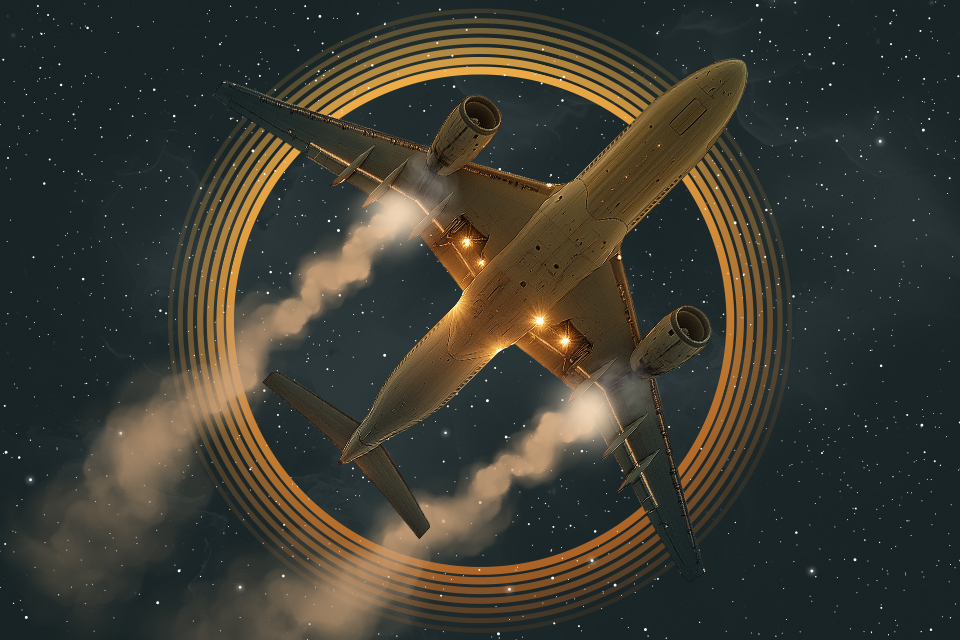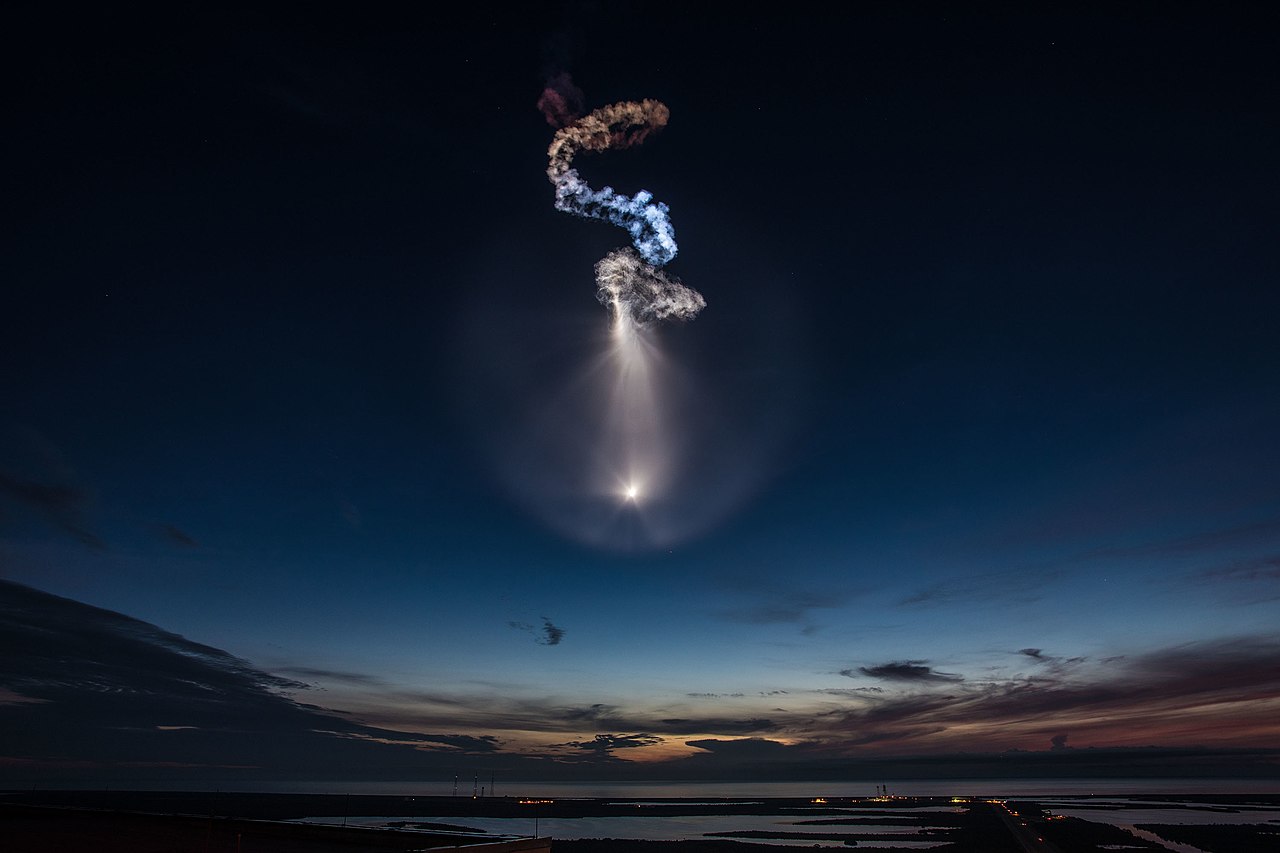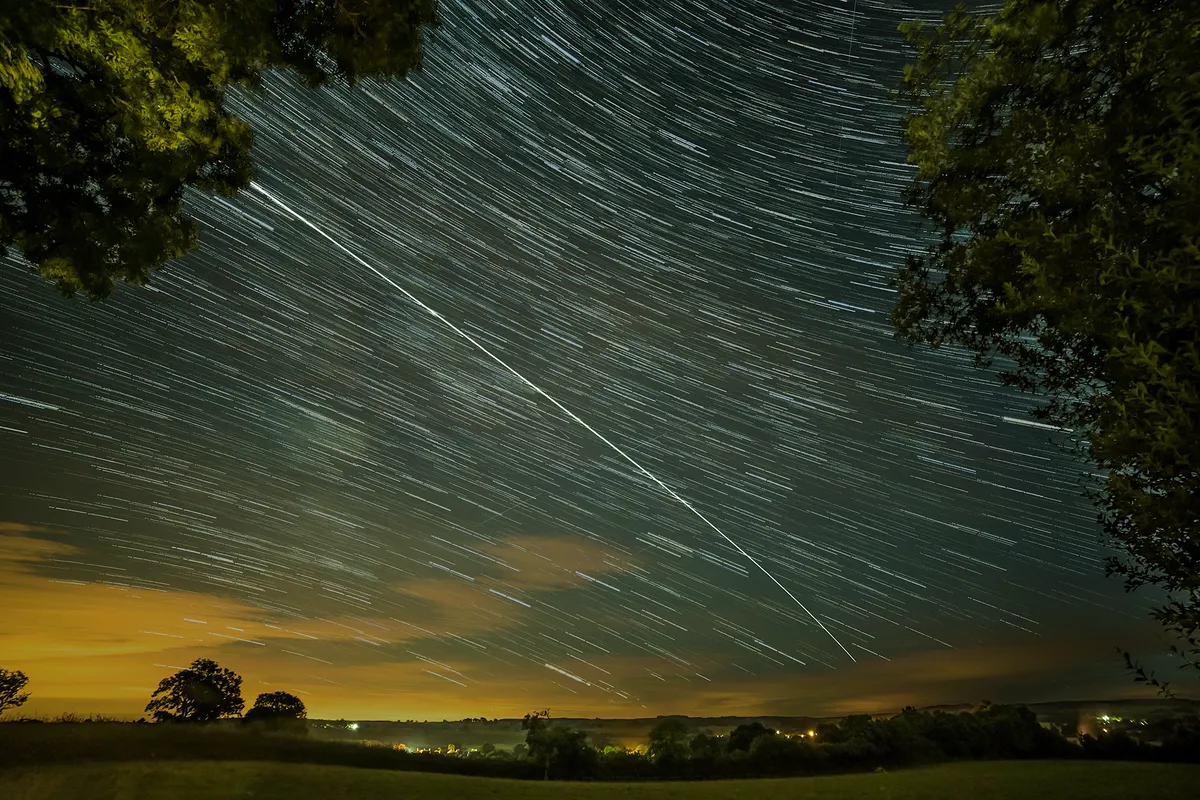If you are a frequent admirer of the night sky, then you know quite well that it always brims with activity. Up there, something is always afoot: the lights are constantly on the move, the stars twinkle, flash, and fall. Many people, especially those with limited experience in observation, tend to explain these things with UFOs, or UAP — Unidentified Aerial Phenomena. And while some aerial phenomena are indeed inexplicable even to scientists and researchers, in most cases, the explanation is usually a rather mundane one.

In this article, we delve into the subject of UFOs, particularly the types of aerial objects that people commonly mistake for aliens.
Aircraft
One of the most common disturbers of the peace are airplanes. Their contrails make them easily identifiable, sometimes even at night, provided the Moon is full. During nighttime, both airplanes and helicopters don navigation lights: red on the left, green on the right, and white on the tail. For better traceability, the lights work in a blinking pattern.

So if one night you notice a group of blinking lights, remember they likely belong to a civilian aircraft. In most cases, you can check this via Flightradar app.
Another common UFO impostor is the high-altitude weather balloon. Some of these stratostats are substantially sized, hence why it’s so easy to notice them when they reflect sunlight. For instance, the Chinese spy balloon shot down in 2023 by the US Air Force measured 200 feet tall. It is now believed that a number of recent UFO reports in the United States are related to Chinese spy balloons.
Sky Lanterns
City dwellers should be familiar with the sight by now, given how ubiquitous these flickering light flocks are. If you’ve never seen them floating in the sky before, chances are you will assume something supernatural is going on.
But there is no mystery here: someone nearby is simply launching sky lanterns. So if you happen to glimpse floating lights that fit this description, don’t rush on social media with hasty UFO claims. First, make sure to check if there are festivities nearby — a wedding, or a corporate event.

Jellyfish
Another phenomenon commonly mistaken for UFOs is the so-called jellyfish — a bright object cocooned in a glowing cloud. Now and then, this cloud spins into a stunning spiral, bright enough to be visible to the naked eye.

Though these jellyfish are very much connected to space, they are not any type of alien technology. On the contrary, they come from very terrestrial rockets. Typically, jellyfish are sighted during predawn launches or shortly after sunset, when sunlight illuminates the exhaust fumes around the rocket.
Jellyfish usually appear along the rocket launch lines, so it’s fairly easy to predict them based on launch schedule. But stray jellyfish do get caught in the wild now and then, particularly when rocket stages in orbit shed remaining fuel. This is exactly what happened in July 2024 during the inaugural launch of Ariane 6 in Europe.
Satellites, Starlink Trains, and the ISS
Aside from airplanes, there’s another category of sky intruders. These are, of course, satellites that travel in low Earth orbit. To observers, they resemble rapidly moving stars, but unlike planes, helicopters, and drones, satellites don’t blink or change direction.

Objects in low earth orbit vary in brightness. The most vivid of them is the ISS, often outshining Venus and visible even in busy city centers. To catch the ISS in flight, you can check its schedule for a specific region with apps like Heavens Above or ISS Detector.
Another unusual nighttime display comes from the so-called Starlink satellite trains, usually caught by spectators mid-ascension when they’ve yet to gain altitude. From below, these satellite groups look like a chain of stars moving in a single file. However, due to wide criticism from the astronomical community, SpaceX has taken measures to dim their satellite trains. Though you can still see them, they do appear more muted.
As already mentioned, while satellites don’t blink like planes do, sometimes their brightness may rapidly change in intensity. When the spacecraft rotates, for instance, which was exactly what happened with NASA’s recently launched solar sail.
Satellites can also flash in the sun when their components reflect light, a sort of suncatcher in space. From the ground, it looks like a star flickering to life, then going dark just as fast. These flashes were typical of first-generation Iridium satellites. And given our access to their real-time coordinates, it was possible to predict the flares beforehand in any part of the globe.

That said, this first-generation Iridium satellite constellation was discontinued in 2019, and the new models don’t reflect sunlight the same way. However, some other satellites still do, and it’s their flashes that we often see light up the night sky.
Meteors
Planes, satellites, and jellyfish are all relatively slow objects that remain visible for a minute or so. On the other end of the spectrum are the “falling stars” that illuminate the sky for mere seconds. These are meteors. Usually no larger than a dust particle, these objects burn up upon entering the Earth’s atmosphere.

Naturally, not all space guests are quite that small. With larger meteors, we don’t see a falling star, but rather a shining object that spawned a long tail. Known as bolides or fireballs, the brightest meteors can outshine the full Moon, making them visible even in daylight. Predicting these fireball events is quite difficult, but sometimes scientists do succeed, like in the case with this year’s small asteroid that burned up over the Philippines as a fireball.
Space Debris
Aside from meteors, Earth gets a fair share of fallen satellites and rocket stages that descend from low orbit after separation. Normally, space debris is disposed of in the Pacific, out of the way of shipping lanes, but this isn’t always the case. From time to time, people all over the globe get to see another satellite or rocket stage burn in the atmosphere.
Telling space debris and meteors or fireballs apart is easy enough. Orbital objects move much slower than meteors, so it’s possible to track them for several minutes at a time. Moreover, they don’t instantly disintegrate, and you could often watch an object enter the atmosphere and falls apart, fragment by fragment.
Venus and Jupiter
Before wrapping up, we should mention how Venus and Jupiter play into this. It may seem strange that relatively stationary planets could be confused for UFOs, but this does happen, and more often than you’d think.

This common mistake is the result of the planets’ luminosity. After the Moon, Venus and Jupiter are the brightest celestial bodies in the sky. They rise before all other planets and can be seen even through light pollution. As a result, many inexperienced observers treat them with suspicion. Particularly when the pair lingers close to the horizon, and the passing clouds create an illusion of movement.
If you are unsure whether the unusual bright objects you see in the sky are, in fact, Venus and Jupiter, there are simple ways to verify this. As with the previous cases, you can use one of countless mobile apps or other planetarium software like Stellarium, Starwalk, and Sky Map.


